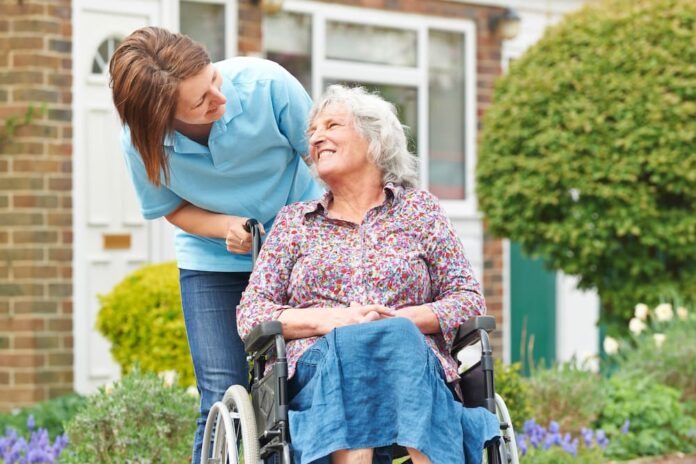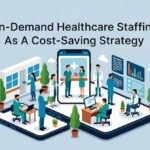Within the landscape of an aging population, the provision of high-quality healthcare for elders residing in residential settings emerges as a paramount concern. As individuals advance in age, their healthcare needs become increasingly complex, necessitating specialized care tailored to their unique circumstances. Residential facilities, spanning nursing homes, assisted living centers, and retirement communities, assume a pivotal role in meeting these requirements. However, ensuring the delivery of exceptional healthcare within these environments demands a multifaceted approach, addressing various challenges while embracing innovative solutions.
Understanding the Challenges: Age-Related Health Issues
As individuals grow older, they often grapple with an array of health concerns, ranging from chronic conditions like diabetes and hypertension to cognitive impairments such as dementia and Alzheimer’s disease. These conditions necessitate a diverse range of healthcare interventions and support services, placing significant demands on residential facilities to provide comprehensive care that caters to each resident’s specific needs.
In care homes in Kingswood, Bristol, for example, the delivery of high-quality healthcare for elderly residents is a pressing concern, demanding innovative solutions to address diverse challenges and ensure dignified and compassionate care.
Staffing Shortages and Training
Many residential settings encounter challenges associated with staffing shortages, compromising the quality and consistency of care offered to elderly residents. Adequate staffing levels are imperative to ensure timely assistance, medication management, and emotional support for residents. Moreover, comprehensive training programs are essential to equip staff members with the requisite skills and knowledge to address the multifaceted healthcare needs of elders effectively.
Communication Barriers
Effective communication forms the cornerstone of quality healthcare delivery, facilitating understanding, empathy, and collaboration among healthcare providers, residents, and their families. However, communication barriers, including language differences, hearing impairments, and cognitive limitations, can impede the exchange of information and compromise the quality of care provided within residential settings. Overcoming these barriers requires innovative strategies and a concerted effort to foster clear and compassionate communication channels.
Innovative Solutions
Specialized Healthcare Teams: Establishing specialized healthcare teams comprising physicians, nurses, therapists, and other allied health professionals is a cornerstone of effective healthcare delivery in residential settings. These interdisciplinary teams collaborate to develop personalized care plans tailored to each resident’s unique needs and preferences, ensuring holistic and individualized care. For further assistance, visit the website and look for services that best fit your needs.
Technology Integration
The integration of technology solutions, such as electronic health records (EHRs), telemedicine platforms, and remote monitoring systems, holds immense potential to enhance healthcare delivery within residential settings. Telemedicine, in particular, enables residents to access medical consultations remotely, reducing barriers to care and facilitating timely interventions. Likewise, EHRs streamline documentation processes, enhance care coordination, and facilitate data-driven decision-making to optimize healthcare outcomes for elderly residents.
Person-Centered Care Approach
Embracing a person-centered care approach prioritizes the autonomy, preferences, and dignity of elderly residents, placing them at the forefront of decision-making processes concerning their healthcare and daily routines. By involving residents in care planning, goal setting, and treatment decisions, residential facilities can foster a sense of empowerment and promote overall well-being. Additionally, person-centered care emphasizes the importance of building meaningful relationships between residents and care providers, fostering trust, empathy, and mutual respect.
Ongoing Staff Training and Development
Investing in ongoing staff training and professional development initiatives is essential to ensure that healthcare providers remain abreast of the latest advancements and best practices in elder care. Training programs should encompass a broad spectrum of topics, including dementia care, palliative care, communication strategies, and cultural competence, equipping staff with the necessary skills and knowledge to deliver high-quality care with compassion and proficiency.
Conclusion
Enhancing healthcare standards for elderly residents in residential settings demands a collaborative and concerted effort from healthcare providers, facility administrators, policymakers, and families alike. By acknowledging and addressing the challenges associated with aging while embracing innovative solutions, we can elevate the quality of life and healthcare outcomes for elders residing in residential settings. Through the adoption of specialized healthcare teams, technology integration, person-centered care approaches, and ongoing staff training initiatives, we can strive towards the provision of compassionate, comprehensive, and dignified healthcare for all elderly individuals, irrespective of their residential setting.
Did you find this helpful? Check out our other helpful articles on our website.
Read Also
- Compounding Pharmacy: Personalized Medication SolutionsA compounding pharmacy plays a vital role in modern healthcare by providing customized medications tailored to the specific needs of individual patients. Unlike mass-produced drugs manufactured by pharmaceutical companies, compounded medications are prepared by licensed pharmacists who carefully combine, adjust, or modify ingredients to create a formulation that best suits a patient’s unique medical requirements.… Read more: Compounding Pharmacy: Personalized Medication Solutions
- The Best Business Decision a Surgeon Ever Made: Ordering a Medical Equipment AppraisalMost surgeons don’t go into medicine because they love spreadsheets, valuations, or negotiating buy-ins. They go into medicine because they want to operate, treat patients, and build something meaningful over time. For one surgeon, that mindset worked perfectly, until the day another surgeon decided to buy into his practice. That moment exposed a problem he… Read more: The Best Business Decision a Surgeon Ever Made: Ordering a Medical Equipment Appraisal
- Creative Approaches to Alleviating Healthcare Staff ShortagesHospitals and clinics are facing staff shortages, which makes it harder to take care of patients well. Finding simple and useful solutions is very important. Easy changes like flexible work hours, good training, and chances to grow can help staff stay happy. Technology, like online doctor visits and helpful tools, can make work easier. Smart… Read more: Creative Approaches to Alleviating Healthcare Staff Shortages
- Understanding the Role of Sterilizers in Healthcare FacilitiesHave you ever wondered how hospitals keep their equipment safe enough to use on dozens of patients every day? Most people never think about what happens behind the scenes, yet these hidden steps play a huge role in patient safety. Sterilizers are part of that system, working quietly to remove harmful germs before any instrument… Read more: Understanding the Role of Sterilizers in Healthcare Facilities
- Building Healthcare Access Where It’s Needed Most: A Local First ApproachHealthcare shouldn’t depend on where you live. But in the U.S., it often does. If you’re in a big city, you likely have options. If you’re in a small town or an underserved neighbourhood, it’s a different story. To fix this, more healthcare leaders are turning to a local-first approach. That means putting clinics and… Read more: Building Healthcare Access Where It’s Needed Most: A Local First Approach
- Revolutionizing Patient Engagement: Innovative Solutions for Improved Care and Treatment SuccessNavigating healthcare system can often feel overwhelming for patients. Between appointments, prescriptions, and treatment regimens, it’s easy for crucial details to get lost in the shuffle. That’s why effective patient engagement and support solutions are more important than ever. Companies like Serva Health, with their pharma hub services, are stepping up to ensure that patients… Read more: Revolutionizing Patient Engagement: Innovative Solutions for Improved Care and Treatment Success
- On-Demand Healthcare Staffing As A Cost-Saving StrategyThis is an exciting and challenging time for the healthcare industry. Technology is advancing almost faster than humans can keep pace. New legislation is creating fresh challenges for the future of healthcare, and the shifting population demographic continues to place more pressure on healthcare facilities. Amidst these changes, healthcare facilities are facing a critical staffing… Read more: On-Demand Healthcare Staffing As A Cost-Saving Strategy
- The Benefits of Contract Labor Staffing in HealthcareThe most successful healthcare facilities today aren’t just reacting to crises—they are building workforce resilience to withstand them. Unpredictable patient demand, coupled with persistent nursing shortages, has made the traditional staffing model obsolete. Relying on mandatory overtime to cover a sudden surge in capacity is a recipe for high turnover and rising employee burnout relief… Read more: The Benefits of Contract Labor Staffing in Healthcare









